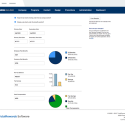We’ve all seen the employment forecast – the winds of youth are coming. Despite the influx of the next generation of workers, senior employee retention could be the higher priority for employers. 25% of workers will be 55 or older by 2018. Failing to retain them could leave companies critically understaffed and forced to tax valuable hiring resources.
Does this mean companies need to start reserving an exclusive employee retention budget for their older workers? Hardly. There are plenty of other steps employers can take to improve senior employee retention.
Show Them That They’re Valued
Older workers are no different than any other employees – they want to feel wanted. Monetary benefits can only go so far in this regard, especially since 70% of workers are motivated by more than just salary.
Transparency of progress toward retirement, health and wellness gains, as well as providing opportunities to be a mentor, will keep them engaged at the office.
Provide Flexible Schedules

Many workers desire greater flexibility as they edge toward retirement age. Offering seasonal hours and phased retirement schedules boosts older worker retention by allowing them to stay busy and productive while enjoying a lighter schedule.
Offer a Variety of Benefits
It’s life – employees shift their attention to different values as they age. A career advancement path might not be as valuable to a 60 year-old as it is to a 30 year-old. It’s important for employers to have a variety of monetary and non-monetary benefits to offer their older employees. What’s more, those benefits need to be presented in a clear, engaging fashion.

Reward Your Older Workers
As companies prepare for the generational shift at the workplace, keeping the wisdom of age amidst the confidence of youth might be the key to consistent, long-term success. Read more about the tools available for retaining and engaging talent in the current and next generations of the workforce.



